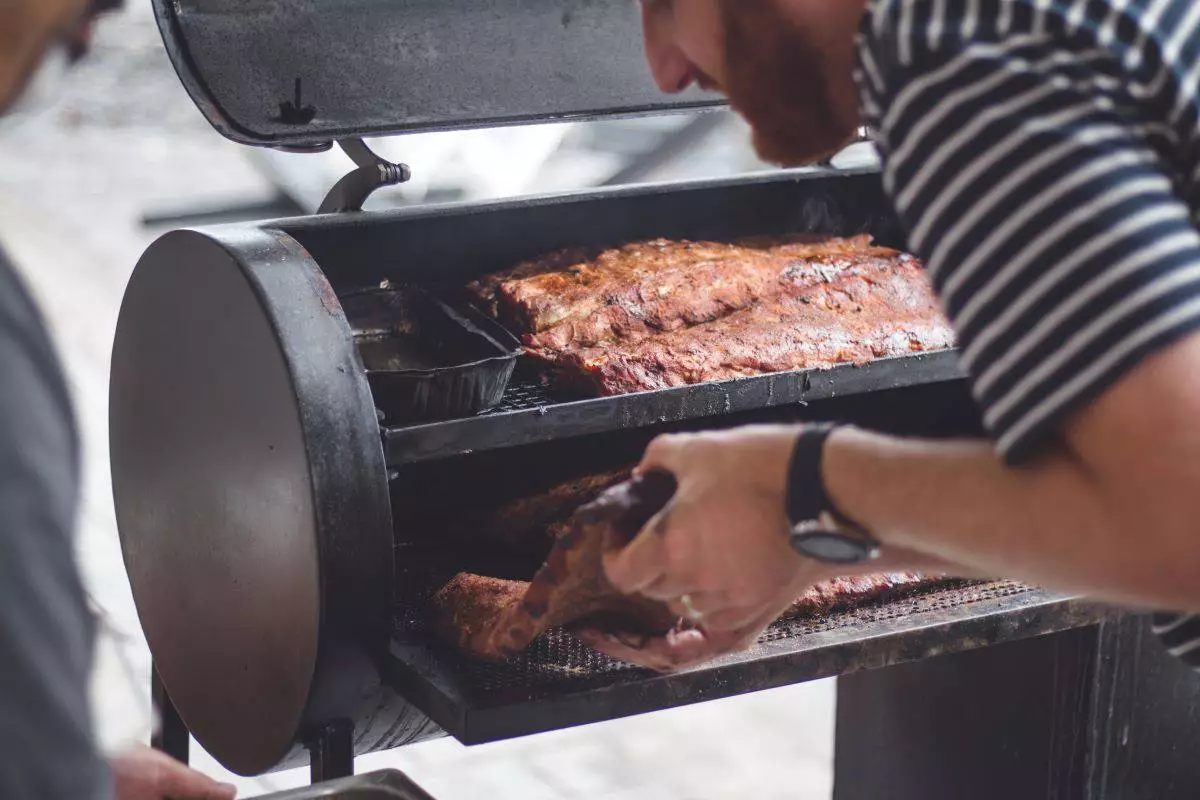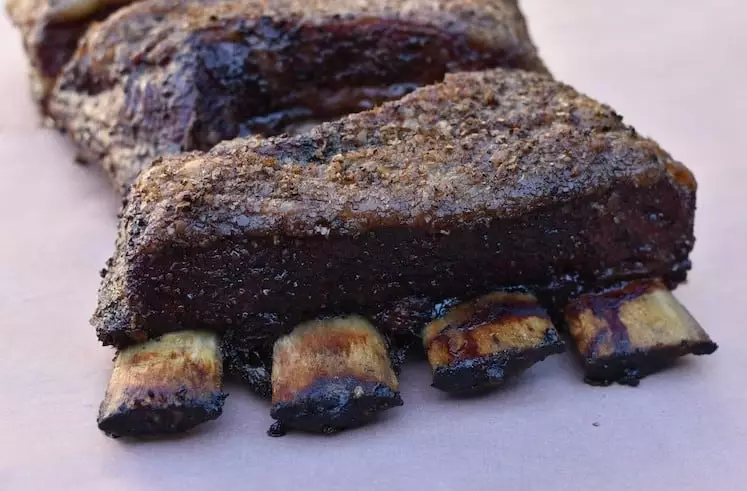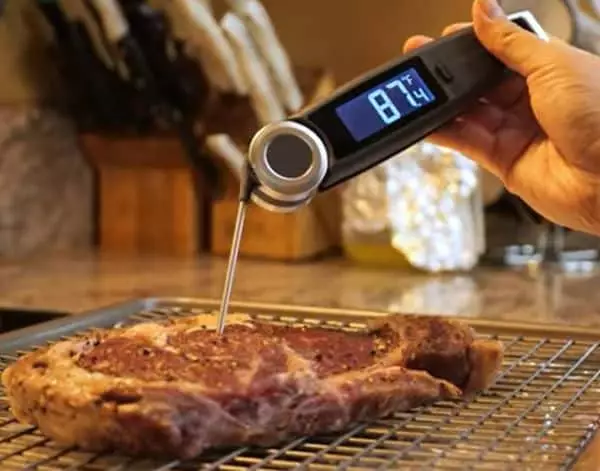
Explore the Art of Low and Slow Cooking with an Instant-Read Meat Thermometer
Since cavemen first discovered fire and cooked their kill on an open flame, humankind has been enjoying a whole new set of food and flavors through the art and science of cooking. Cooking is the application of heat to ingredients to trigger chemical and physical reactions. It makes food edible and safe for consumption but also unlocks flavors and increases its nutritional value.
Throughout history, humankind has come up with numerous cooking techniques. Each culture has its unique way of cooking and preparing food. But if there is one typical style of cooking that you can almost always find in any culture and custom around the world, it is the art of low and slow BBQ.
Table of Contents
What is low and slow BBQ?
The low and slow barbecue cooking technique is precisely as its name suggests; it involves using low temperatures for cooking food (primarily different types of meats) over a long period. The goal is to make the meat soft, tender, flavorful, and juicy.
There are different ways to do low and slow cooking. You can use a grill or smoker. The idea is to cook meat slowly over indirect heat. This process allows all the connective tissues in the meat to thoroughly break down while the meat absorbs all the smoky flavor. It seems straightforward. Well, yes, it is a straightforward cooking process. But to get it right, you must equip yourself with the right tools. The instant-read meat thermometer is one of the essential tools for low and slow barbecue cooking.
Why do you need an instant-read meat thermometer for low and slow BBQ?
If you have done a bit of research into the art of barbecuing, or have been grilling meats for some time, then you know the importance of getting the right temperature for your proteins. The same idea goes for low and slow cooking.
Unless you cut the meat, it can be challenging to determine when it is fully cooked when cooking at low temperatures. No matter how experienced you are with the grill or smoker, you always risk overcooking or undercooking the meat when you don’t use a meat thermometer. An instant-read meat thermometer takes out the guesswork of slow cooking, as it lets you check the temperature of the meat without cutting through it, ensuring your precious proteins are cooked to perfection.
How to use an instant-read meat thermometer for low and slow BBQ?
Using instant-read meat thermometers for a low and slow BBQ is easy and no different from other cooking methods.
First, before cooking, make sure your meat is at room temperature. This will ensure your meat cooks evenly.
To check for the internal temperature, stick the tip of the thermometer into the thickest part of the meat. Make sure no part of the thermometer touches the bone or fat of your meat. Wait for a few seconds to get the internal temperature reading. The digits you are looking for depend on the type of protein (sometimes cut) you are cooking.
For example, chops or steak cuts of pork, beef, and lamb should reach an internal temperature of 145°F (63°C). Ground meats, whether beef, pork, lamb, turkey, veal, etc., should reach 160°F (71°C) of internal temperature. Meanwhile, poultry meats (chicken, duck, turkey, fowl, etc.) should be cooked to an internal temperature of 165°F (74°C).
Also, different styles of cooking require different internal temperatures. For medium-rare beef, for example, it should reach an internal temperature of 135°F or 145°F for medium.

What to look for in an instant-read meat thermometer?
Here are a few pointers you need to look for when shopping for an instant-read meat thermometer for your next low and slow BBQ culinary project:
Look for a wide temperature range
The wider temperature range of thermometers lets you measure temperatures as low as 32°F (0°C) and up to as high as 572°F (300°C). These will help you measure the temperature of all types of proteins and cooking methods you wish to work with.
Easy to read
Your instant read thermometer should be easy to read. Unfortunately, many people fail to consider their eye problems or the design of their thermometers. Make sure the digits of your thermometer are legible.
Fast response time
Instant-read thermometers are designed to give you instant readings. But as you know, not all thermometers are equal; some are instantaneous, while it may take more than a few seconds to read the temperature with others.
Durable
Last but not least, you need a durable and hard-wearing thermometer that can withstand high temperatures. Again, you cannot go wrong with stainless steel models.

Different types of instant-read meat thermometers
There are many different types of instant-read meat thermometers, each with pros and cons.
Digital thermometers
Digital instant-read thermometers come with a digital display and are the most popular type. They are quick and easy to use, and they give accurate temperature readings.
Analog or dial thermometers
Dial-type thermometers are another popular type of instant-read meat thermometer, they are cheap, and unlike their digital counterparts, they don’t require batteries. However, they may not be as accurate as digital thermometers and can be challenging to read.
Thermocouples and Infrared thermometers
The other two types of instant-read thermometers are thermocouples and infrared thermometers. The former is the most accurate and versatile but can be expensive.
The latter can provide a quick temperature reading from a distance. However, it only measures surface temperature, not internal temperature. Thus, there are more accurate choices when slow-cooking meats. Not to mention its temperature reading can be affected by steam or smoke.
Parting Tips
Whether you are cooking a Thanksgiving turkey, pulled pork, pork shoulder, beef brisket or ribs, check the temperature of the meat in multiple places to ensure even cooking.
Also, when inserting the thermometer into the meat, ensure the tip doesn’t touch the bone or fat of the meat, as this can give you an inaccurate temperature reading. Instead, insert it at the thickest part of the meat cut and aim to get the tip to the center of the meat.
Lastly, don’t solely depend on the tool. While a thermometer will usually give accurate readings, it can also fail. Use your instincts, and check for visual cues like color and texture to help you determine when the meat is cooked to your liking.
Discover Other ChefsTemp Products
Discover more recipes and learn kitchen tricks by joining our cooking family on Facebook.
You may also like:















